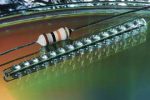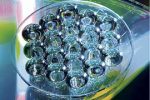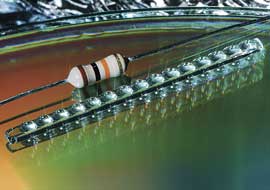This trend towards miniaturization is also driving the growing market for high-brightness LEDs (Light Emitting Diodes). These small and long-lasting light diodes must be aligned next to each other very closely in the types of applications mentioned above. In addition, their extremely diffuse light has to be directed in a specific direction. In order to be able to form a beam, however, reflectors require a lot of space. Furthermore, installing and adjusting individual aspherical lenses as an alternative or combining them takes up too much time and therefore incurs high costs.
Now SCHOTT has come up with a mass manufacturing solution that meets these requirements and had it patented. By further developing the so-called precision molding process, high volumes of arrays and strips of precisely formed lenses can be produced. During this process, these optical components are given their precise shape in hot glass and no regrinding or polishing is necessary. Special high refractive low Tg glasses with a low transformation temperature (Tg) are used. Whereas flat or ball-shaped pre-forms were used as the starting material with the previous procedure, thin glass rods or fibers with a radial, symmetrical diameter are used with the improved technique. This is of benefit to the manufacturing process because it allows for high precision lenses with complex structures to be mass-produced.
“These lenses can have a very high and steep curvature and be placed very closely together,” says Dr. Ralf Biertümpfel, Application Manager at SCHOTT in Mainz. “This makes them particularly attractive for light sources with several LEDs, for instance. Strips and arrays of lenses are much easier to process and mount than individual lenses,” he adds. For example, 19 aspherically formed lenses 5 mm in diameter and 2.5 mm in height can be combined on an array that is only 25 mm in diameter. This process also allows for other supply forms such as diffractive optical elements and Fresnel lenses. “In addition, this process can be used to produce hybrid optical components. Now, two or more optical materials can be formed and melted together at the same time using only one process step.
“This opens up entirely new options for further exploring the cost-efficient miniaturization of optical systems,” concludes Jonathan Stringham, head of Product Management and Business Development Advanced Optics at SCHOTT. “For this reason, we are very open to new ideas and applications.”




